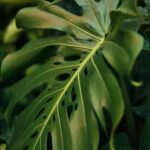Landscaping borders play a crucial role in enhancing the overall look and feel of a garden or yard. They not only provide a sense of organization and structure but also add visual interest to the outdoor space.
In this article, we will explore various landscaping border ideas to inspire you as you plan, design, and install borders in your garden or yard. Whether you’re aiming for a more formal and structured look or a more natural and organic feel, there are endless possibilities when it comes to landscaping borders.
The key to successful landscaping borders lies in careful planning and consideration of the overall design and layout of the outdoor area. From measuring the space to choosing the right materials, there are several factors to take into account when creating borders that seamlessly integrate with the existing landscape. Additionally, selecting the appropriate plants for your borders can further enhance their visual appeal while adding color, texture, and even fragrance to your outdoor space.
Throughout this article, we will delve into various aspects of landscaping borders, including different materials that can be used, creative design ideas, step-by-step installation guides, maintenance tips, planting suggestions, and real-life examples of stunning landscaping borders. Whether you’re a seasoned DIY enthusiast or seeking professional assistance, these landscaping border ideas are sure to spark your creativity and elevate the look of your garden or yard.
Planning
When planning for landscaping borders, it is crucial to consider the overall design and layout of the outdoor area. Taking into account the existing elements of the garden or yard will help in creating a cohesive and visually appealing border. One tip for planning is to measure the space accurately to determine the length, width, and shape of the border. This will ensure that the landscaping borders are proportionate and complement the existing landscape.
Determining Border Placement
One important aspect of planning for landscaping borders is determining their placement within the outdoor space. Consider whether the borders will be placed around flower beds, walkways, or along property lines. This will help define the purpose of the landscaping borders and guide their design.
Considering Overall Design and Style
Another essential tip for planning is to consider the overall design and style of the outdoor area. Take into account factors such as architectural features, color palette, and theme of the garden or yard. This will help in selecting materials and design ideas that complement the existing aesthetic while creating a harmonious look.
Creating a Detailed Plan
To effectively plan for landscaping borders, create a detailed plan that includes measurements, sketches, and notes on desired materials and plants. This will serve as a visual guide during installation and help ensure that the final result aligns with your vision. Additionally, consider seeking inspiration from design magazines, online resources, or professional landscapers to gather ideas for your landscaping border project.
By thoroughly planning and taking into consideration the overall design and layout of your outdoor space, you can create beautiful and functional landscaping borders that enhance the visual appeal of your garden or yard.
Materials
When it comes to creating landscaping borders, there are various materials that can be used to achieve the desired look and functionality. Each material has its own pros and cons, so it’s important to consider these factors when making a decision for your outdoor space. Here are some popular materials for landscaping borders:
- Stones: Stone borders are a durable and natural-looking option for landscaping. They come in a variety of shapes, sizes, and colors, offering versatility in design. However, they can be labor-intensive to install and may require professional help for larger projects.
- Bricks: Brick borders provide a classic and timeless look to any garden or yard. They are relatively easy to install and can create clean lines in the landscape design. On the downside, bricks may shift over time, requiring maintenance to keep them in place.
- Wood: Wood is a versatile material that can add warmth and texture to landscaping borders. It is also relatively easy to work with and can be customized for different designs. However, wood borders may rot over time due to exposure to moisture and will require regular upkeep.
- Plants: Using plants as landscaping borders offers a softer and more organic border option. Low-growing shrubs, flowers, and ornamental grasses can create a lush and natural look. However, plants will require regular maintenance such as pruning and watering.
Each of these materials has its unique aesthetic appeal and practical considerations, so it’s essential to weigh the pros and cons based on your specific needs and preferences when deciding on the best material for your landscaping borders.
In addition to considering the individual qualities of each material for landscaping borders, think about how they will complement the overall design of your outdoor space. Whether you prefer a rustic feel with stones or a clean-cut look with bricks, the choice of material should harmonize with the existing elements in your garden or yard.
By carefully selecting the right material for your landscaping borders, you can enhance the visual appeal of your outdoor area while also ensuring long-term durability and ease of maintenance.
Design Ideas
When it comes to landscaping border ideas, the design possibilities are endless. By incorporating creative and unique border designs, your garden or yard can achieve an eye-catching and stylish look that enhances the overall aesthetic appeal of the outdoor space. Here are some design ideas to consider for your landscaping borders:
Curved Borders
One way to add visual interest to your landscaping borders is by creating curved edges along flower beds, walkways, or patio areas. This organic and flowing shape softens the lines of the outdoor space and adds a sense of natural beauty. Consider using materials such as river rocks, flexible metal edging, or plants with cascading foliage to achieve a graceful curve.
Layered Borders
Layered borders involve creating multiple tiers or levels within the border design. This can be achieved by using retaining walls, stacked stones, or elevated planters to create depth and dimension. Layering different materials and plants within the border adds complexity to the landscape and creates a visually dynamic focal point.
Geometric Shapes
For a modern and structured look, consider incorporating geometric shapes into your landscaping borders. This can be achieved by using bricks, pavers, or concrete blocks to create clean lines and defined angles. Geometric borders work well in contemporary or formal garden settings and provide a polished and sophisticated finish to the outdoor area.
By exploring these creative landscaping border ideas, you can elevate the design of your garden or yard to new heights. Whether you prefer flowing curves, layered textures, or geometric precision, there are endless options to choose from that will complement your outdoor space beautifully while expressing your personal style through landscaping.
Installation
When it comes to installing landscaping borders, proper planning and precise execution are key to achieving the desired look for your garden or yard. The first step in the installation process is determining the layout and design of the borders. This involves measuring the space, considering any existing landscape features, and envisioning how the borders will complement the overall outdoor area.
One of the most common materials used for landscaping borders is bricks. Bricks offer a classic and timeless look, making them a popular choice for many homeowners. They are also durable and versatile, allowing for various design possibilities.
Another option is natural stone, which adds a rustic and organic appeal to the landscape. Wood is also a popular choice for a more natural and warm aesthetic. It’s important to weigh the pros and cons of each material before making a decision.
In terms of tools and equipment needed for installing landscaping borders, some essential items include a spade or shovel for digging, a level to ensure even placement, landscape fabric to prevent weed growth, and a rubber mallet for securing stones or bricks in place. Additionally, depending on the complexity of the design, other tools such as a handsaw or circular saw may be necessary for cutting materials to fit specific dimensions.
| Landscaping Border Material | Pros | Cons |
|---|---|---|
| Bricks | Classic look, Durable | May require professional installation |
| Natural Stone | Rustic appeal, Organic look | Maintenance may be required over time |
| Wood | Natural aesthetic, Versatile design options | Susceptible to rot or insect damage without proper maintenance |
Maintenance
Maintaining landscaping borders is essential in keeping your outdoor space looking beautiful and well-kept. One of the key maintenance tasks for landscaping borders is weed control. Weeds can quickly take over and ruin the look of your borders, so regular weeding is crucial. Consider using a pre-emergent herbicide to prevent weeds from sprouting, or remove them by hand as soon as you spot them.
In addition to weed control, proper edging is necessary to maintain the neat and tidy appearance of your landscaping borders. This involves defining the border’s edge to create a clean separation between the garden or yard and the surrounding landscape. There are various methods for edging, including using physical barriers such as plastic or metal edging strips, or creating a natural edge using plants or mulch.
Lastly, repairs may be needed from time to time to ensure that your landscaping borders remain in good condition. This could involve fixing any loose stones or bricks, replacing damaged wood, or replenishing mulch in plant-based borders. Regularly inspect your borders for any signs of wear and tear so that repairs can be made promptly.
| Material | Pros | Cons |
|---|---|---|
| Stone | Durable and long-lasting | May be more expensive; heavy to install |
| Brick | Elegant and classic look | Requires regular maintenance to prevent shifting; may crack over time |
Planting Tips
When it comes to landscaping border ideas, the choice of plants is crucial in achieving the desired look for your garden or yard. Low-growing shrubs, flowers, and ornamental grasses are excellent options for creating visually appealing and functional borders. These plants not only add color, texture, and interest to the landscape but also help to define and separate different areas within the outdoor space.
Choosing the Right Plants
Before selecting the plants for your landscaping borders, consider factors such as the climate, sunlight exposure, and soil conditions in your area. Opt for low-maintenance plants that are well-suited to the specific environment and require minimal care. Additionally, think about how you want the border to look throughout the year – whether you prefer evergreen shrubs for year-round appeal or seasonal flowers for bursts of color.
Incorporating Plants Into Border Designs
Integrating plants into the overall border design is essential for creating a cohesive and harmonious look in your landscaping. Mix and match different types of low-growing shrubs, flowers, and ornamental grasses to create varying heights and textures within the border.
Consider layering plants with taller specimens in the back and shorter ones in the front to add depth and visual interest. You can also experiment with different color palettes and bloom times to create a dynamic and vibrant border throughout the seasons.
Maintaining Plant Borders
Once your plant borders are established, proper maintenance is key to keeping them looking their best. Regular watering, pruning, fertilizing, and mulching will help promote healthy growth and longevity of the plants.
Additionally, stay on top of weed control by regularly inspecting the borders for any unwanted growth that may detract from their beauty. Lastly, be prepared to make any necessary adjustments or replacements as plants grow or as seasonal changes occur in order to maintain a well-maintained landscaping border.
Inspiration
In conclusion, landscaping borders play a significant role in enhancing the overall look and appeal of any garden or yard. By carefully planning and considering the available space, materials, and design ideas, individuals can create beautiful and unique borders that add value to their outdoor areas. Whether it’s using stones, bricks, wood, plants, or a combination of these materials, there are plenty of options to choose from when it comes to landscaping border ideas.
Installing and maintaining landscaping borders requires careful attention to detail and the proper tools and equipment. However, with the right preparation and know-how, it is entirely achievable for both novice DIY enthusiasts and professional landscapers alike. By incorporating low-growing shrubs, flowers, ornamental grasses, or other suitable plants into the border design, individuals can further enhance the aesthetic appeal of their outdoor spaces.
For those seeking inspiration for their landscaping projects, exploring real-life examples of stunning before-and-after photos can provide valuable insight into what is possible with creativity and dedication. Success stories from both DIY enthusiasts and professional landscapers serve as a testament to the transformative power of well-designed landscaping borders. With commitment and a clear vision, anyone can create a beautiful landscape that truly stands out.
Frequently Asked Questions
What Is the Cheapest Way to Do Landscape Edging?
One of the cheapest ways to do landscape edging is to use basic materials such as plastic or metal garden or landscape edging. These are cost-effective options and can be easily installed without the need for professional help.
How Can I Edge My Lawn Cheaply?
If you’re looking to edge your lawn cheaply, one option is to use simple tools like a spade, shovel, or manual lawn edger to create a clean edge along the grass. This method doesn’t require purchasing additional materials and can be done with minimal cost.
What Type of Edging Is Best Landscaping?
The best type of landscaping edging ultimately depends on the specific needs and aesthetics of your outdoor space. Some popular options include metal, plastic, stone, brick, or even wood edging. Each material has its own advantages and considerations in terms of durability, flexibility, and visual appeal in landscaping projects.

Welcome to my gardening blog! I am passionate about plants and enjoy sharing my knowledge and experiences with others. In this blog, I will write about everything related to gardening, from tips on how to get started to updates on my own garden projects.





